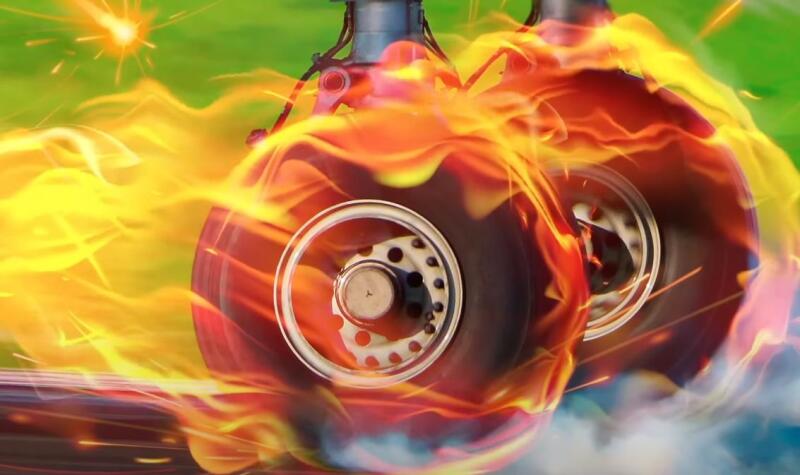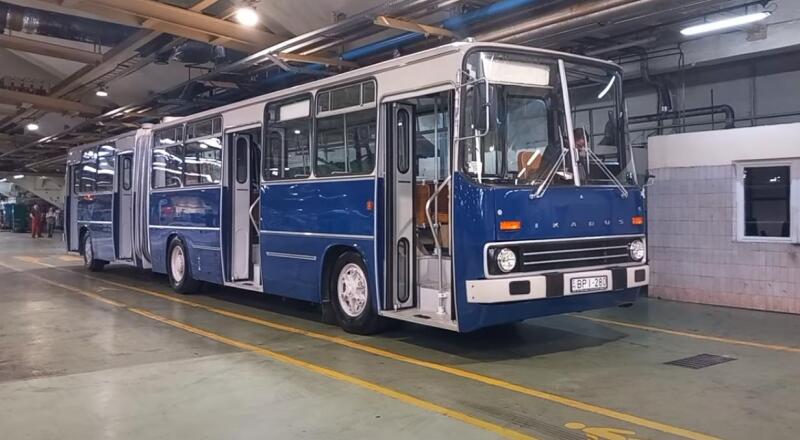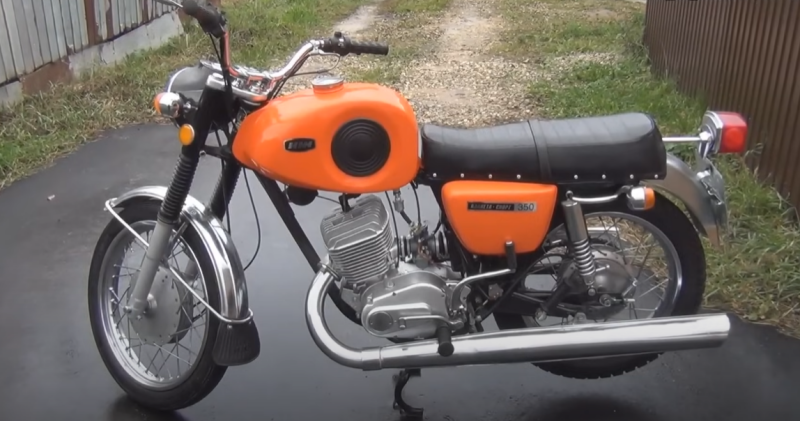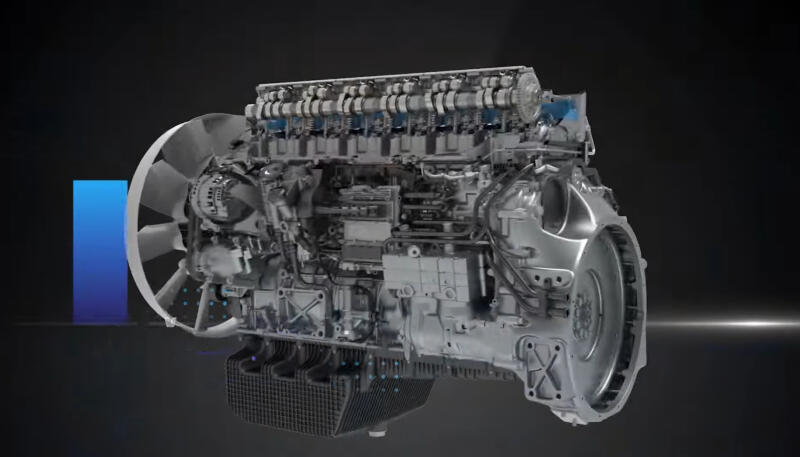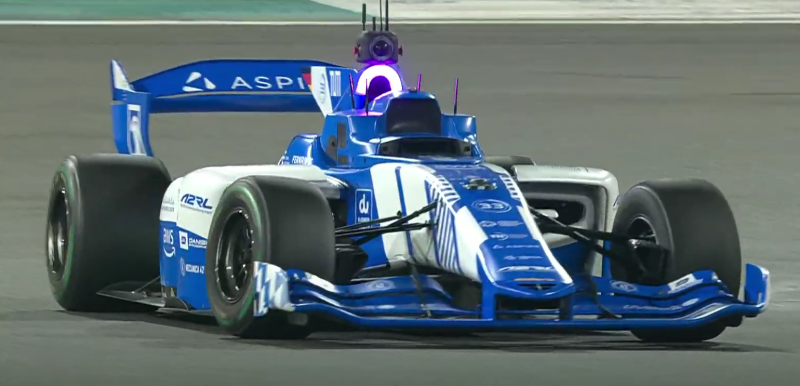Now imagine an airplane weighing tens of tons, which at the moment it touches the runway has a speed ranging from 260 to 400 km/h or more! The resulting loads cannot be compared with those experienced by the car in any mode. Therefore, airplane wheels must be special.
Aircraft loads on the runway and in flight
Someone will say: what does it have to do with the plane being in the air? He doesn’t “ride” across the sky on wheels, does he? It doesn’t roll, and it’s not on wheels, but they still experience the load when the plane is in a rarefied atmosphere. At this time, the tires are firstly cooled to a temperature of approximately -30°C. And secondly, due to low pressure they begin to swell.
 Sometimes it happens. Photo: YouTube.com
Sometimes it happens. Photo: YouTube.comWhat happens at the time of landing? The wheels will not rotate immediately: for several seconds they rub against the surface of the runway - many saw a small smoke as the landing gear touched the runway. Essentially, the airliner “drags” the wheels along the concrete until their speed is the same as the plane itself.
 A slight smoke upon landing is normal. Photo: YouTube.com
A slight smoke upon landing is normal. Photo: YouTube.comWhen the car lands, the friction force instantly heats the tires to 260° (rubber begins to melt at +180°). At the same time, do not forget about the runway coverage, which can be different, just like highways.
Both in summer and winter, the runway is cleaned with special machines that blow off dirt, clear snow, and dry moisture with hot air from aircraft turbines attached to them. But nothing is perfect!
Even small flaws in the form of, for example, holes 5-10 cm deep, cracks or random pebbles, lead to a sharp increase in load. If you test ordinary tires on the runway at landing speed, they will simply be smeared across the runway.
How does a plane stop?
Many people think: when the aircraft just touches the ground, the pilot begins to press the brake pedal with all his might to reduce the speed. No. First, the engines come into operation, or rather the used gases, which are directed in the desired direction through a complex reversible mechanism. Wheel brakes begin to be used in accordance with the specific aircraft's flight manual. For example, for the Tu-154 this is a speed of 140 km/h.
What are aircraft tires made of?
Let’s immediately note that they are tubeless. Rubber (natural and synthetic rubber) consists of several layers (on average 18). In addition to it, technical fabrics, cord threads made of nylon, steel and aramid are used in the tire construction.
 Airplanes do not have summer or winter tires - they are “all-season”. Photo: YouTube.com
Airplanes do not have summer or winter tires - they are “all-season”. Photo: YouTube.comThe latter is a special heat-resistant material used in the manufacture of body armor and fire-retardant clothing for Emergency Situations Ministry employees. Aramid has a tensile strength of 550 kg/sq. mm. For comparison: for steel this parameter is 150 kg/sq. mm.
Features
Nitrogen is pumped inside the tire, which does not support combustion - the tire will not ignite even with strong heat. The pressure to which aircraft tires are inflated is on average 14 atmospheres. These are not car “one and eight” or “two and two”!
 Compared to a car tire, an aircraft tire is almost “bald”. Photo: YouTube. com
Compared to a car tire, an aircraft tire is almost “bald”. Photo: YouTube. comThe tread pattern is simple and consists of several longitudinal grooves. The plane does not need to make tight turns or ride on snow or ice. The tire design provides the liner with good directional stability and prevents hydroplaning.
dimensions
Tire dimensions can vary greatly for different airliner models. However, some of them are not far from car tires. For example, the Boeing 737 tire size is 27x7,75R15. This means that the internal diameter is 38 cm or 15 inches. External – 69 cm (27”). Width – 19,7 cm (7,75”).
 One wheeled cart can have from two to eight or more tires. Photo: YouTube. com
One wheeled cart can have from two to eight or more tires. Photo: YouTube. comHowever, this is not the case on all aircraft. On some of them, the latter parameter can reach 50 cm, and the diameter – 1,5 m. To guarantee safety, manufacturers install several wheels on one car. For example, the Boeing 777 has 14 of them, the 737 has only six, but the Antey and An-225 have 32 each!
When and how to change tires
The resource ranges from 200 to 500 landings. The scatter is associated with landing conditions, which can be emergency, or even emergency. And also on the quality of the strip coverage and its maintenance.
 Front tires wear out earlier. Photo: YouTube.com
Front tires wear out earlier. Photo: YouTube.comAt the same time, the tires on the front pillar wear out faster, since it provides turning and maneuvering. If we talk about the distance traveled by an airplane on the ground, then it covers approximately 8 thousand km per year.
 There are a lot of bolts on the wheel! Photo: YouTube.com
There are a lot of bolts on the wheel! Photo: YouTube.comBefore installing another tire, the old one is carefully inspected. It will be subject to replacement if there are the slightest defects or if a special marker appears (disappears) - like on cars. Changing tires is a fairly expensive procedure, which is in no way similar to the Formula I process beloved by all journalists and operators.
 A special jack is used to lift the cart. Photo: YouTube.com
A special jack is used to lift the cart. Photo: YouTube.comTo install other tires, the plane taxis to the parking lot and a team of mechanics begins to work on the tires. First you need to raise the chassis, which is a block consisting of several wheels.
During the work, a jack can be used, the pump of which uses the pressure created in the tire itself.
Next, the bolts are unscrewed and the wheel is lowered to the ground. Replacing one takes approximately 15 minutes for a qualified team. After the operation is completed, a senior specialist checks the quality of the work performed.
Why are the rims collapsible?
For their manufacture, alloys of magnesium, zinc, and titanium are used. The products consist of two parts (forged or cast), which are connected with bolts. At the final stage of manufacturing, the discs are subjected to anti-corrosion treatment - anodized, chrome-plated, and coated with epoxy resin. Why don’t they use a solid disk - it’s more reliable? Firstly, aircraft tires are very hard, and secondly, their design implies a strong overlap of the beads and rim.
 Aircraft tires are inflated to 14 atmospheres or more. Photo: YouTube.com
Aircraft tires are inflated to 14 atmospheres or more. Photo: YouTube.comYou won't be able to put an airplane tire on it. The outer halves of the disks are treated with glue during installation: it is this that guarantees the tightness. And it is a very important element of security. For example, if water gets into the wheel, at altitude it will turn into ice, which will expand, which can lead to disastrous consequences during landing.
Why don't people buy new tires instead of used ones?
As strange as it may sound, companies that have aircraft at their disposal are not the owners of the “rollers” installed on them. Tires are not bought, they are leased. On passenger aircraft, replacement is carried out approximately once a year. But they don’t always install new tires. Most aircraft owners prefer to repair it.
 Aircraft tires are expensive. Photo: YouTube.com
Aircraft tires are expensive. Photo: YouTube.comA new layer is welded onto the worn tread pattern: this can be done up to seven times. For what? The answer is banal - it’s all about cost: the price of one aircraft tire is approximately 6 thousand, and in some cases even 10 thousand “green”. That’s why tires are leased, and after a year they are returned to the manufacturer to be repaired. This procedure costs four times less than buying a new stingray.
